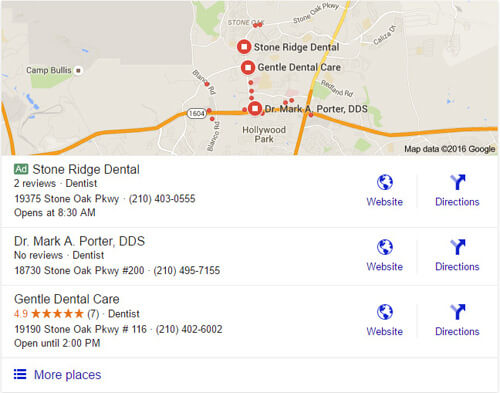
by Fred Brewer | Mar 15, 2018 | Client Tips
Thinking of launching a business or product? You’d be surprised how many vital steps get missed by the dreamers and schemers. You know what they say: love is blind. When you’re really attached to an idea, maybe even in love with it, there are things you overlook. Unfortunately, these can be pretty big things.
So if you’re thinking of launching a business or product, save yourself time, hassle, and frustration, and do these six things before you invest a ton of time and effort.
- Make sure there’s a market. You may be in love with your idea, but if there’s no market for it, it may be better left in your idea journal. Do some quick market research, ask around, do a Google search for similar products and businesses, and see if people want or need what you have to offer. Doing this upfront can save you a ton of time and money and keep you from investing your resources in something that’s not going to do well.
- Come up with a list of names. The name of your business or product is so important and will set the tone and give a first impression of your business. Choose wisely! We’re in the age of information overload. If your potential customer or consumer can’t glance at the name or see it in passing and know something about what the company or product is or what it does, they’re not going to go out of their way to investigate further. Your name should be easy to understand, convey something relevant, and pique the curiosity. If your name is something completely irrelevant or non-descriptive, even if you think it’s cute or catchy, it’s probably not going to be memorable or effective.
- Google the names you’ve come up with. There are few ‘creative’ and ‘unique’ business names in the home services industry. Whatever your industry, make sure you Google the name ideas you have before falling in love. If you’ve slapped your first name in front of the words “chimney services,” “plumbing services,” etc., you’d better be sure there isn’t a business in your area with a similar business name or you’ll have a whole host of nightmares once your business is launched.
- Check the availability of the domain name. Even if you’re not 100% sure which name you want to go with yet, go to godaddy.com and check the availability of the domain names for each of your ideas. If they’re available, buy them right then and there. If they’re not, scratch the names off your list unless you’re willing to pay top dollar to buy them from someone. Most available domain names cost around $12, and even if you’ve only whittled down your list to five and can’t make up your mind, the cost to buy all five domain names will be a lot less than the cost of wasted hours because you didn’t check the availability of the domain name before you fell in love and started branding.
- Check the availability of the social handles. Almost as important as the availability of the domain name for your new business or product is the availability of the social handles. Go to Twitter, Facebook, Instagram, Pinterest, etc. and make sure the handles for your new business or product idea are available. The last thing you want is to have inconsistency across your social platforms or some impossible to remember or figure out handle, all because you didn’t check to see if the one you wanted was taken on each of the major social platforms.
- Talk with others in your trusted circle. Remember our earlier conclusion: love is blind. When you’re in love with a product or business idea, you may miss things, important things — that’s why it’s a good idea to involve others early and get their input. Different people in different age groups with different perspectives who are less attached to the idea than you are may see things you don’t or think of things you overlook in the excitement. If you bring trusted people in early in the game, it will only save you time and frustration. After all, two heads (or three or four) are better than one.
Thinking of starting a service business? Ask yourself these 5 questions first…

by Fred Brewer | Jan 30, 2017 | Best Reads
If you read a lot of articles on entrepreneurship and leadership, you likely see this question all the time. The question that’s designed to make YOU question whether or not:
- You have what it takes
- You’re in the right business
- You’re worthy of chasing down this dream of yours
- Your dream is even worth chasing down.
Here’s the question: Do you wake up excited about your business?
If this question triggers your inner critic and self-doubt, you’re not alone. But I’d like to challenge all the “experts” who sit behind their laptops all day (when they’re not working on a new Medium post, biking local trails, or drinking craft beer); those who encourage the rest of us to mistakenly believe that if we aren’t 100% excited, 100% of the time, we’re doing the wrong thing or we’re the wrong ones to do it.
Full disclosure: I’m not a traditional optimist.
The Reality Is…You’re Normal
Any realistic, transparent business owner will tell you that some days are the bees knees and they couldn’t imagine doing anything else. But they’ll also tell you that some days feel like nightmares that end with them lying in bed at night, eyes wide open, stomach in knots, with thoughts of calling it quits.
That’s normal. No matter what you’re doing – whether you’re living your dream and doing exactly what you were made to do or not – you’re going to have good days and bad days. When a day, week, or month kicks your a**, it’s normal to wake up feeling less than thrilled about getting to work. This doesn’t mean you lack passion, talent, or grit (the hottest word in business) – It just means you’re human and you’re in a rough patch.
Ask a Better Question
When you find yourself in the middle of a rough patch and read an article that asks “Do you wake up excited about your business?” it can be anything but inspiring and motivating.
What we really need in these tough times is a different question.
Carter (one of our co-founders) is famous for saying it’s all about the questions we’re asking. Our questions frame our answers. When you’re feeling discouraged, don’t ask yourself the question, “Do I wake up excited about my business?” You already know the answer is, “Not today.” And that’s ok.
Instead, ask yourself, “What can I learn from where I sit right now? What is this part of my journey showing me?” Push it further. Ask yourself, “What needs to change and how can I change it?” And if you don’t know the answer to this, ask yourself, “Why aren’t I excited about my business when I wake up?”
When we ask different questions, we get different answers. And the biggest difference between the question we see plastered across entrepreneurship blogs and the questions above is that the latter encourage learning, growth, and change, while the former encourage stagnation, discouragement, and complacency – the killers of many businesses and business dreams.
So next time you feel like you’re ready to call it quits, don’t buy into the delusion that you’re somehow cut from a different cloth and not qualified or justified in your pursuit – instead, ask better questions and see what you can learn from the bad days and how you can turn it around.

by Fred Brewer | Nov 30, 2016 | Client Tips
Do you know how much earning potential your business is wasting by not following up after service estimates? Think of a number…think bigger. We’ve heard successful businesses quote six digit figures in unfollowed up services. I don’t care who you are, that’s a lot of money.
So what’s keeping you from following up? Is it the fear of bugging your customers by not taking their silence as a no? Well, you’re making a mistake. The truth is, even if a customer says no, you shouldn’t always think of it as definitive.
Here are just a few reasons a customer may initially turn down a service or ‘ghost’ you after an estimate is provided:
#1 Timing isn’t right. We all want our homes to be as safe, efficient, and attractive as possible – but when it comes to home services, timing is everything. Perhaps your customer had family coming, a baby on the way, or a surgery planned when you provided the estimate for the work, and they simply couldn’t make time to have techs in their home. Life has so many variables, and when you’re providing a service that requires customers to open up their homes to the possibility of people coming in and out, or messes being made, you have to remember that timing is everything.
Does this mean that the service is unwanted? No. Follow up at a later date and you may find that the customer is ready to schedule. If you take their initial inaction as a sign that they aren’t interested in having the service performed, you won’t reach out to them when the timing is right.
#2 Priorities aren’t favorable. As a homeowner, you want everything to be perfect NOW. But sometimes that’s not possible. Sometimes you have to prioritize the services you want done and the projects you want to take on so that perfecting your home is manageable.
Is it possible that when you provided the estimate for the service, your customer was getting estimates for other services as well? Is it possible they had an internal priority list and your service simply didn’t make it to the top? Reach out to them. If you don’t keep the service at the forefront of their mind, it may continue to fall below other home improvement priorities. You don’t have to be pushy – just reach out!
#3 Finances aren’t right. Did you ever want something that you just couldn’t swing financially? Of course you have! We all have! Sometimes it’s the same for your customers. They know they need the service, they want the service, but they just can’t make it happen within their budget at the present moment. But finances change. Just because they can’t swing it today doesn’t mean they can’t swing it a few months from now. Recognize that finances play a big part in our choices and keep in touch with your customer. Everything may align with your next customer touch. But if you aren’t following up, you’ll never know.
#4 The service was unplanned. Did an inspection reveal the need for some major repairs? There’s a good chance your customer wasn’t prepared for that news and just couldn’t manage it at the time. This is an example of when the service denial may have been a combination of timing, priorities, and finances. If the need for repairs came as a surprise, you have to allow your customer time to figure out when timing and finances may be favorable, and where on their list of priorities the service may lie. Give them a little space and then reach out.
#5 They forgot. Life can get pretty crazy sometimes, and it’s easy for some things to slip between the cracks or get forgotten. So if you haven’t heard from a customer after providing an estimate, don’t assume they’re not interested. They may simply have forgotten to reach back out to you to schedule the job. By following up until you get a yes or a no, you’ll prevent customers from letting a little forgetfulness keep them from getting the great service you offer.
Take Time To Follow Up – Who Knows What You’ll Learn
Are you following up on service estimates? Make it a regular part of your sales process. At the very least, you’ll get an idea of why your customers aren’t scheduling, which may help you improve your business.
Looking for a seamless follow-up process that makes it easy and effortless for you to cash in on open estimates? Check out Closing Commander.

by Fred Brewer | Nov 15, 2016 | Client Tips
Every day, we encounter problems and hiccups that cause annoyance and stress. Even the most minute and trivial problem can decrease joy when repeated and multiplied – especially when you’re having “one of those days.”
Take your phone, for example. Have you ever had an app shut down on you while you were in the middle of doing something? What about the view flipping between landscape and portrait while you’re trying to show someone a photo you took? Or what about when you’re too fast for your unlock passcode and think your phone has registered four numbers when it’s only registered three? These are little, meaningless annoyances – #FirstWorldProblems in the grand scheme of things. But when you’re having a bad day, every one of these can be the “last straw.”
What if you could put a stop to all of those little annoyances? As small as they are, wouldn’t that make you just a tinge less stressed and more content? Of course it would. And the same goes for your customers. What may seem like a seemingly small problem or annoyance can compound into major frustration for your customers. And when you, as a company, are committed to pinpointing those little problems and hiccups in relation to your services and eliminating them for a more seamless and pleasant customer experience, you have the power to reduce the stress levels and boost the contentment levels of your customers. You have the power to create a more pleasant customer experience and keep the association positive and stress-free.
And in many cases, eliminating those little problems is easy. But you can’t eradicate what you can’t see – and you can’t see what you aren’t looking for. Are you looking? Here are a few tips to help you identify where you can eliminate little annoyances and make your customers’ experiences and lives just a little bit better…
Read into reviews and feedback. Feedback and reviews aren’t just for other customers – they’re for you! Really analyze what your customer liked about the experience and what they didn’t like about the experience. Sometimes the wording used and the things your customer chooses to mention or leave out can reveal so much. Pro tip: look for the big “but” in each review. What follows will usually let you know where the customer felt discomfort, stress, or disappointment.
Ask your customers, family, and friends. I know it’s crazy, but have you considered asking your customers and others in your life what little problems or hiccups in service reduced their overall satisfaction? Maybe they found it annoying that the service provider didn’t ask before using their restroom. Maybe it bothered them that no one mentioned the service charge when the appointment was made. These are things that, as the business owner, you may not think about. Asking those on the customer side of things can reveal what’s hidden to you, but obvious to the customer.
Hire your own company or another company to perform the service in your home. If you can be objective, take things a step further and actually spend some time in the customer’s shoes. Hire your own company or another company to come out and do a job in your home. The perk of hiring your own company is that you’ll get a true idea of what type of experience your customers are having, given that the techs really do treat you just like a normal customer. The perk of hiring another company is that you’ll see what they do better or worse than you, which may open your eyes to opportunities to improve and surpass their level of service.
Read the reviews of your competitors. So many business owners are obsessed with their competitors, but they don’t take the time to really use their competitors for their own growth. When you read your competitors’ reviews, you can see what their customers liked and disliked about their experience. Use that to better your business. After all, you don’t have to be the best, you just have to be better. So look for where your competitors are succeeding and failing and use that knowledge to improve your business and win over new customers.
You have a lot more power than you may think. So don’t just perform a service – improve your customers’ lives, every little way you can.

by Fred Brewer | Jul 15, 2016 | Need To Know
It’s no secret that things are always changing with the Wild Wide Web, but if you feel like changes are happening at an accelerated speed as of late, you’re not alone. This week, we sat down with Tom Smodic, our Marketing Manager and former Lead Account Manager. His chosen week of vacation this summer just so happened to align with one of Google’s biggest recent changes: the addition of an Ad to the local pack. We’ve asked him to talk about how fast things are changing and what this change means for small business owners. Here are some of the highlights.
Tom: I was gone a week, and the biggest change I saw was that Google started to monetize the local pack, which is different than organic and different than Google Ads.
For those of you who don’t know, the local pack, which is an area specifically reserved for local businesses, was at one time a seven spot, then five, then three. Now, for all intents and purposes, it’s a two spot.
Tom: Two out of the three are based on whatever algorithm Google has for local service businesses, but then the third can be paid. Whether that’s going to impact people’s decision-making has yet to be seen because it hasn’t fully rolled out yet. Are people going to care that one of these is an Ad or are they just looking to see where things are located?
Were you surprised that Google took this step and sort of crept into the local pack space?
Tom: It was not so much a shock, not so much a surprise. We’ve seen Google looking at how to change that space, whether it was the “Request a Contractor,” “Request A Quote,” and things like that, or things like this. They’re always looking to deliver results. But what you have to remember is that Google is a Search Engine, but they’re also an Advertising Platform, and they’re in it to make money. They’re not in it for altruistic reasons, they’re in it to make money. And if they find a way to do that without disrupting everything that they’ve kind of built their reputation on, they’re going to do it. So, I think we’re just seeing that trend continue.
Do you think this trend has picked up any momentum or simply remained steady?
Tom: I think it’s accelerated since I’ve been working here, just the amount of changes. They’re looking to do some more things in real time, like updates and search results, as opposed to set updates and stuff like that. It’s not that you’ll have a change like this every week, but Google’s always looking. And it’s not like there’s going to be a huge announcement or anything like that. You’re not going to get an update on your phone telling you what happened, it just kind of does. And it’s up to us to stay on top of that as best we can so we can answer the questions that may come up from our clients. That’s part of the ongoing day-to-day thing that a lot of people don’t realize. Because it’s changing, we have to stay on top of the landscape. If we stopped reading two years ago and just said, “Well, we know how this works,” or “We know what we’re doing,” we’d be in trouble because a lot of it has changed since then. We have to keep up to date. I just happened to pick the one week where Google made a significant change, though it’s yet to be seen if people will even notice or care.
Until we see whether this affects people’s decision-making when searching for local services, what advice do you have for business owners?
Tom: It still boils down to having good reviews. If you’re running your company well and delivering good service – from the first phone call that the customer makes to your company to the final follow-up and anything beyond that – if you’re delivering the right customer service to them and are friendly, don’t overcharge, or do those things that customers don’t like, they’ll be more inclined to leave a good review. And you won’t be scrambling to keep up with somebody and keep reviews fresh. It all comes back to that. Are you delivering value to your customer base and are you doing a good job of it? Whether it’s online or offline, your customers are going to talk to people – whether they leave a good review or they go tell their neighbor. Run your company well and make sure your customers are satisfied. Let them know that you appreciate their business and that you’d really appreciate it if they shared their experience by writing you a review on Facebook or Google.
Unfortunately, most people aren’t going to just write reviews unless they’re dissatisfied, so you’ve got to ask. And believe me, reviews matter! BrightLocal just conducted a survey and showed users a mock-up of the new local pack with an Ad. The third business got more clicks even though it wasn’t first in the pack. Why? Because it had good reviews!

Do you think a lot of the reasoning behind the acceleration of changes has to do with mobile?
Tom: Yeah, I think mobile is the reason for it. When I started, mobile was there, but there wasn’t that big of an emphasis on it. Google’s trying to create the same experience across both desktop and mobile. Searching on mobile, you’re looking for more real time results, especially when you’re looking for gas stations, places to eat, and things like that. Google knows they have a limited window to deliver the right service to the right person at the right time. So, whether it’s paid for or it’s just through organic search results, they know they have to get it right sooner. Whereas on desktop, it may be a little less time-sensitive.
But not only that, there’s less screen space with mobile. There’s just not as much real estate and they’re trying to put the most relevant result in front of the right person at the right time. So yeah, I think mobile plays into it and probably rightfully so. I don’t think desktop’s going to go away any time soon, but for these types of searches, time-sensitive searches, people on the go, Google knows they have to get it right. And I think that trend’s only going to continue.
Do you think we’re headed in the direction where business owners are going to have to invest in both organic and paid search?
Tom: I think there’s going to be a time when that is true, especially for the smaller guys. How much will need to be invested in paid, I’m not sure, but I think, just with the way Google’s moving, it could end up being a full front page of paid search results. That could just be it. Now whether or not, as that happens, people start to distrust the results is yet to be seen. Again, people might not even care. So, I think it kind of depends on where you’re located and your market. Every market is different. I think the thing to keep in mind is, people are not buying services or products from a company or a brand even, they’re buying from people. So, yes, you want to show up and you want to be in search results, and there might be a time where you have to pay for that, but there’s a lot that you can do offline. Like I said, focus on your systems, focus on your processes, focus on the people that you hire, because you can control those. You can’t always control Google’s algorithms – people think we can, but unfortunately we really can’t. Though I wish we could!
It’s hard to say what Google will really do, but the latest changes just suggest they’re looking to make money in any way they can. Just like any other business, you kind of have to adjust to where your customers are. But for people to go to another Search Engine would take a colossal fail on Google’s part – they’d have to really screw up the user experience to drive people away at this point.
However, I do think more people are going to start looking for businesses on Facebook, Yelp, Instagram, etc., in addition to Google. They’re going to look in multiple places to research a business beforehand. I think they’ll look to local groups and within local communities, paying more attention to the local area and wanting to stay within local. And that’s an advantage that local service businesses have that big brands don’t – they’re more personable & approachable, and you can leverage that by being a part of the community, being visible, being active.
Establish your brand and put yourself out there in your community so that people know who you are and want to do business with you specifically. It’s more than TV commercials and radio – be a resource for those in your area, sponsor little league teams, refer your customers to other local businesses.
There are ways it can be done, but I think in terms of pure search, there might be a time where you do have to allocate some funds for paid search. But then, what do you do after? What’s the experience like after the person finds you? I mean, these are the things you need to think about. They can find you, but if you have bad reviews, no reviews, or are perceived to provide a bad customer experience, then they’re going to go to somebody else, regardless of how far up or down on the first page of search results you are.
Even if you get lucky and capture that click or phone call because you’re first in organic and first in the maps, if the person picking up the phone has the wrong tone, you could lose the customer that way. So you have to be cognizant from the very beginning, all the way to the end of service, and be consistent. Like I said, you might get that click or that call, but what happens after that is ultimately in your control and will determine if they do business with you and come back to you. If you’re in business, you’re in the people business, regardless of your industry. Search may change, but that’s not going to change
So, we’ll just have to wait and see with Google.





